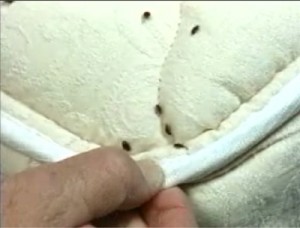The song goes, “Oh Christmas tree, oh Christmas tree! How lovely are your branches”. What the carol fails to mention, however, are the potential pests lurking on those branches. We expect to have our homes filled with guests as loved ones. However, there are less than desirable guests that you’ll need to be on the lookout for and stop before they spoil all the holiday cheer. A vigilant combination of prevention and eradication will help to keep your home free this holiday season!
Christmas Tree Pests
You have to expect that when you bring a live tree into your home, there is a potential for pests to be living in its branches that will be brought inside as well. Examples include spiders, mites, and aphids.
It’s imperative to carefully inspect your Christmas tree before making a purchase. However, if some bugs manage their way into your home, it’s best to use a vacuum cleaner to pick up any spiders or aphids.
You will also want to avoid hanging edible decorations, which are popular holiday staples but will obviously attract pests. Dough ornaments and popcorn garlands are tempting food choices that may attract more bugs inside of your home.
Ticks
Ticks can live in pine trees, landing on humans and animals. Since ticks are vectors for disease, you must thoroughly inspect yourself and immediately remove any ticks you may find. You can prevent ticks from hitching a ride on your body by wearing long sleeves/pants, and tucking legs into socks when outdoors. Keeping animals on an anti-tick medication also helps to prevent any passengers.
Peridomestic Roaches
Peridomestic is a scientific term for “around the house,” We use it to refer to cockroaches that have taken up residence inside the home.
Again, prevention is the best defense. Prevent cockroaches by keeping your home free of food debris (such as leaving a rogue snack plate in a bedroom or on the coffee table). When facing an infestation, you will want to consult experienced technicians as cockroaches can become a very large problem.
Bed Bugs
Bed bugs transfer from an infested house to other houses on furniture, and in baggage, boxes, suitcases, packed clothing, and bedding— especially when people travel frequently or change residences. During this holiday season, protect your home from a potential infestation by protecting your mattresses with bed bug covers, and be sure to dry all bedding on high heat before washing. Bed bugs can be prevented!
To get the most joy from your holidays this year, it pays to be vigilant against incoming pests. You don’t want any of your houseguests bothered by anything other than one another. For more information on dealing with tree pests, silverfish, ticks, and other annoyances or to get started on pest control and eradication program, please contact the licensed and professionally trained experts at Hogarth’s Pest Control today.

